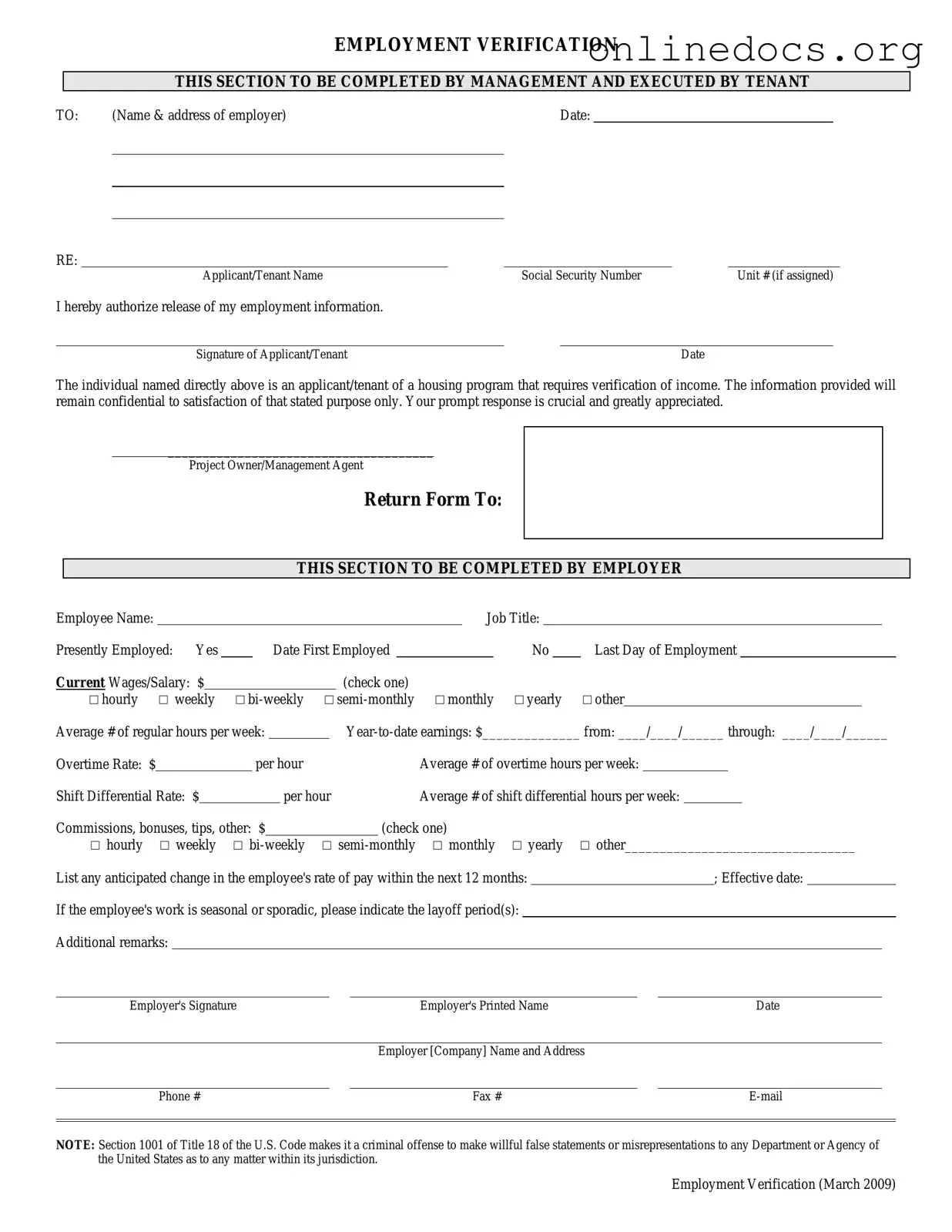Filling out an Employment Verification Form can seem straightforward, but there are common pitfalls that many people encounter. One frequent mistake is leaving out essential information. It’s crucial to provide complete details about your employment history, including job titles, dates of employment, and the name of your employer. Omitting any of these can lead to delays or complications in the verification process.
Another mistake is providing inaccurate information. Double-check your entries to ensure everything is correct. A simple typo in your job title or the wrong dates can raise red flags. Employers rely on this information to confirm your work history, so accuracy is key.
Some individuals forget to include their contact information. This can be a significant oversight. If the verifier cannot reach you for clarification or additional details, it may hold up the process. Always include your current phone number and email address to facilitate smooth communication.
Additionally, not following the instructions on the form can lead to issues. Each Employment Verification Form may have specific guidelines on how to fill it out. Ignoring these can result in an incomplete or improperly formatted submission. Take a moment to read the instructions carefully before you begin.
Another common error is failing to sign the form. Many people overlook this step, thinking it’s unnecessary. However, a signature is often required to validate the information provided. Without it, your form may be deemed invalid, causing further delays.
Some applicants also underestimate the importance of timing. Submitting your form too late can impact your job application or other processes. Be mindful of deadlines and ensure you send in your Employment Verification Form promptly.
Lastly, not keeping a copy of the completed form can be a mistake. Having a record of what you submitted can be helpful if there are any discrepancies or if you need to refer back to it later. Always keep a copy for your records to avoid any confusion in the future.
